Staying Fit

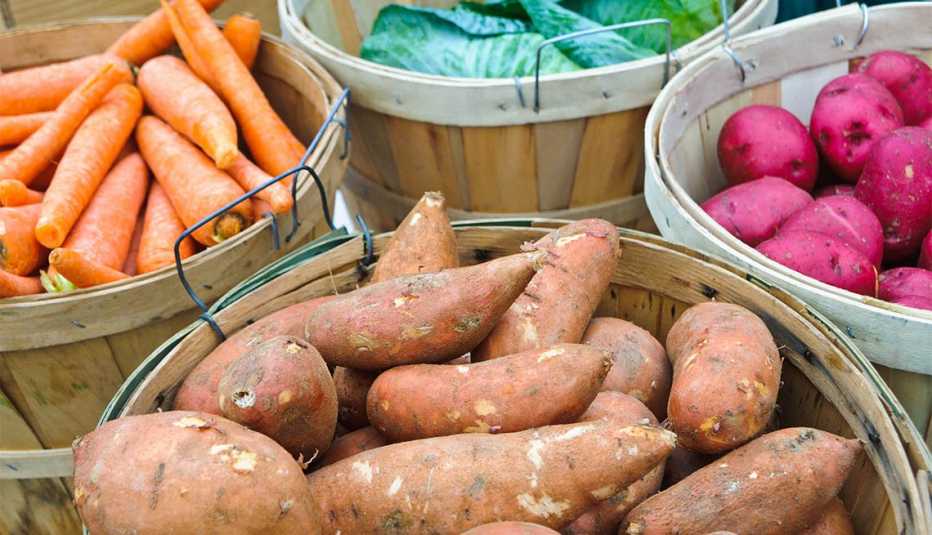
You've heard of “eating the rainbow” when it comes to getting lots of nutritional variety in your diet. Although that goal may seem easier when you're knee-deep in summer greens and produce, winter provides its own bounty of immune system boosters — right when cold and flu season means you really need them.
High on the list? Winter squash, sweet potatoes, carrots, beets (and don't forget their greens) and many green vegetables. Cruciferous veggies, such as cabbage, brussels sprouts, broccoli, kale, collards, turnips and rutabaga, are at their best in winter, when they've had a bit of cold exposure when they are grown.


AARP Membership— $12 for your first year when you sign up for Automatic Renewal
Get instant access to members-only products and hundreds of discounts, a free second membership, and a subscription to AARP the Magazine.
The exceptions to the rainbow rule are onions, garlic, turnips and cauliflower, all of which boast nutritional benefits, especially onions and garlic. They are known as alliums. Also including leeks, shallots, chives and green onions, alliums have a sulfur-containing compound that is naturally detoxifying and anti-inflammatory. Plus, a single cup of chopped onion provides 20 percent of your daily value of vitamin C. Both vitamins A and C are important for your immune system, and other winter produce provides more of each. Yellow or deep-orange vegetables, such as winter squash and sweet potatoes, contribute vitamin A, and one cup of red cabbage provides 43 percent of the daily value of C — at just 20 calories.
Herbs and spices contain powerful antioxidant compounds, along with adding flavor and, sometimes, color (think chili powder, turmeric and curry powder, which contains turmeric). Try using just a little as you cook vegetables; even one-quarter to one-half teaspoon goes a long way to boosting health.
With all of its antioxidant activity and super nutrition, winter produce is ripe for the picking. Enjoy the variety to avoid that feeling that there's nothing to eat in winter. Here are some recipes to help you relish eating the rainbow.

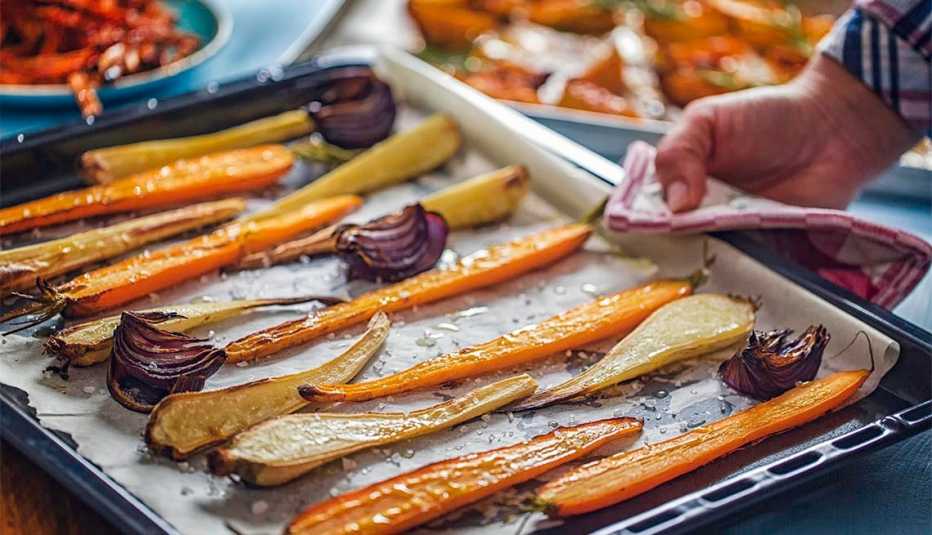
Herb-Roasted Root and Other Vegetables
This is a satisfying and easy dish to make, with a pleasant aroma that fills the house. I make it whenever I want substantial leftovers to eat throughout the week. Use any root vegetables that you like, such as rutabaga, kohlrabies, leeks and shallots. Make sure to use only white or gold beets, if they are available, as red ones will color your entire dish of vegetables unless you find a way to segregate them. If you have brussels sprouts, try adding them to the mix. A key to good roasting is to give the veggies some space in the pan. In fact, it's better to use two dishes than to overcrowd one. Switch positions in the oven halfway through if you use two dishes.
Serves 4
Ingredients
- 2 onions, cut into quarters
- 10 cloves garlic, unpeeled
- 2 cups carrots, peeled and cut into 1- to 2-inch pieces
- 3 small turnips, peeled and cut in half to about 2-inch pieces
- 1–2 regular, Japanese or purple sweet potatoes (not yams), peeled and cut into 3-inch pieces
- 1 to 2 cups winter squash, peeled and cut into 2-inch cubes (or use precut fresh squash, but not frozen types)
- 1 1/2 cups crimini or shiitake mushrooms, cut in half
- 1–2 white, gold or red beets (see note above), peeled and cut into quarters (optional)
- 2 tablespoons olive oil
- 2 teaspoons balsamic vinegar
- Salt and pepper, to taste (optional)
- 3 sprigs rosemary or 1 to 2 teaspoons dried
- 3 sprigs thyme or 1 to 2 teaspoons dried
1. Preheat the oven to 425° F.
2. Combine all vegetables in a large glass baking dish. Add the olive oil, vinegar, salt and pepper, and toss well.
3. Add the herb sprigs or dried herbs. Cover the dish. Bake for 40 minutes. Remove the cover and see if the vegetables are cooked through. Cook for another 5 minutes or until the vegetables are tender but not mushy. Remove the sprigs of herbs and peel the garlic if you intend to eat it. Serve hot.
©2019 From The Veggie Queen: Vegetables Get the Royal Treatment, Jill Nussinow, MS, RD
Nutrients per serving: 241 calories, 7 grams total fat (saturated, 1 gram; trans fat 0), 42 grams carbohydrates; 15 grams total sugars (0 added sugar), 5 grams protein, 8.4 grams fiber, 154 milligrams sodium, 0 milligrams cholesterol





























































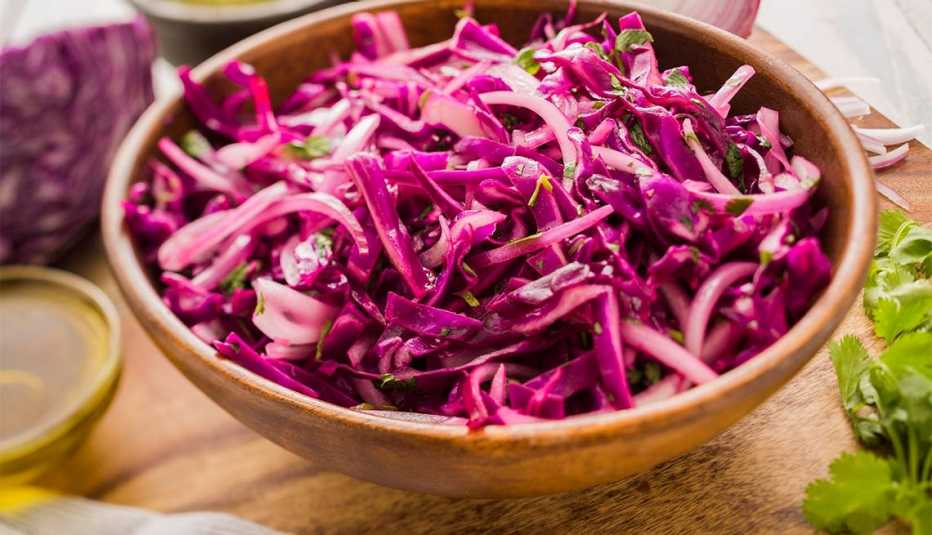
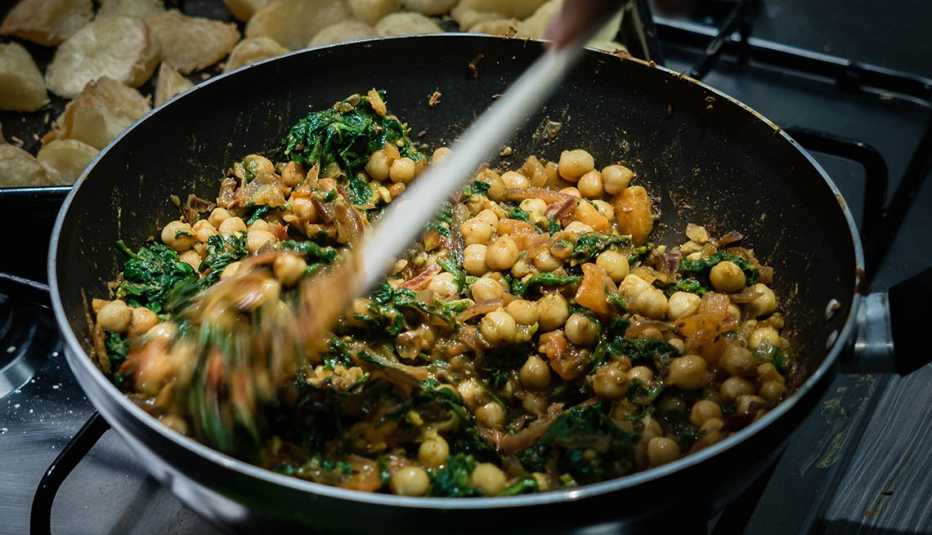
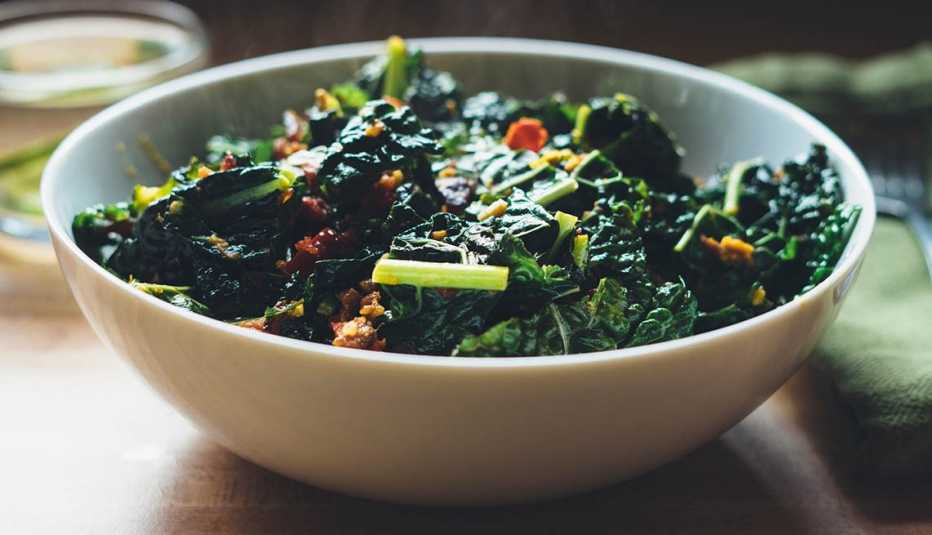




More on Health
Easy Superfood Soups
Recipes for 3 delicious cold-weather favorites from a nutritionist/chef
The Skinny on Weight-Loss Apps
Research shows that food and fitness trackers like Noom really do help people shed poundsHow to Improve Your Posture
Why you're slouching more than you used to — and how to give that hunch the heave-ho